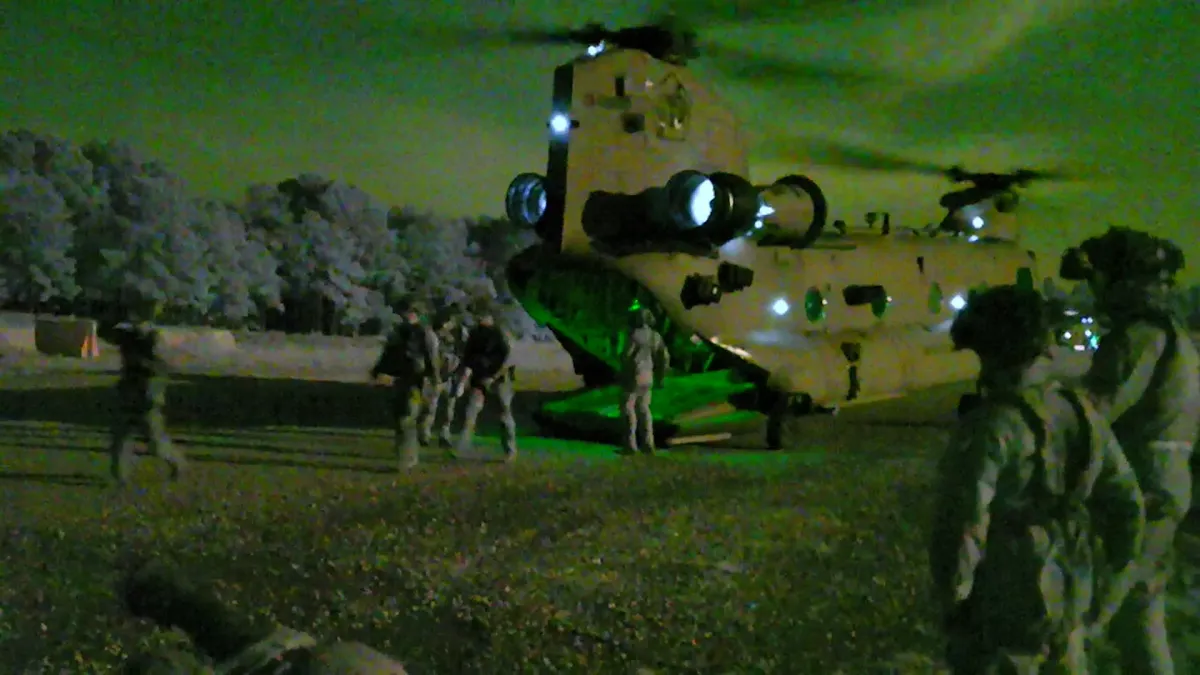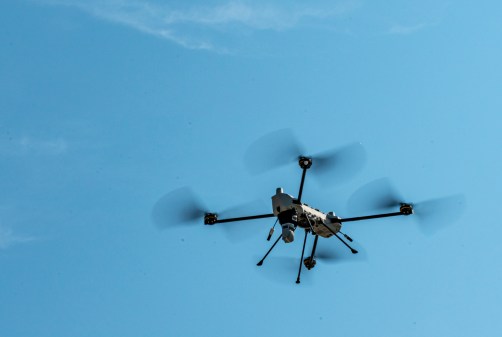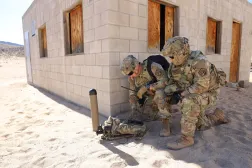Army expanding ‘transforming-in-contact’ concept to divisions, armored and Stryker brigades

The Army is planning to begin outfitting divisions and more brigades with new equipment, a move that would significantly expand its so-called transforming-in-contact concept.
Transforming-in-contact, a key initiative championed by Chief of Staff Gen. Randy George, envisions using deployments and troop rotations to test new equipment — mainly commercial off-the-shelf gear — that could allow units to be more responsive on a dynamic battlefield. It has initially focused on three main areas where officials say the Army needs to be faster and more adaptable when it comes to delivering equipment to forces, due to how challenging the threat environment is and the cat-and-mouse aspect of countering opponents’ moves: unmanned aerial systems, counter-UAS and electronic warfare.
So far, the experimental units include 2nd Brigade, 101st Airborne Division — the first mobile brigade combat team — 2nd Brigade, 25th Infantry Division — experimenting as the light brigade combat team — and 3rd Brigade, 10th Mountain Division.
To date, the experimental units have been infantry, which are typically easier to set as a baseline and integrate capabilities and technologies, as opposed to Stryker and armored units that require more challenging platform integration. The effort has also only included brigades as opposed to full divisions, which the Army is moving to be the unit of action to be able to operate across vaster distances against sophisticated nation-state adversaries.
Now, the Army is progressing toward what George has coined transforming-in-contact 2.0, which will include two armored brigade combat teams, two Stryker brigade combat teams, additional formations in the National Guard and Reserves and two divisions, for the first time.
At the end of fiscal 2025, every warfighting function, to include protection and sustainment, will be part of the transformation efforts, George noted on Tuesday at the annual AUSA conference.
The Army hasn’t announced what units will be part of the next go-round, as that is still being determined, but it will likely be units in the process of beginning the service’s readiness cycle, dubbed Regionally Aligned Readiness and Modernization Model (ReARMM).
As units come back from either the Pacific, Europe or the Middle East, they’ll get new equipment immediately. The goal is to give them these capabilities at the beginning of their ReARMM cycles because this allows new members and commanders to come into a unit, train on the new capability and validate it at a major exercise — all as a cohesive organization.
Those eventual Stryker and armored units, which will look different from the infantry units, will be given things similar to what the first three brigades received, such as C2 Fix capabilities, mission command systems and unmanned equipment, Command Sgt. Maj. T.J. Holland, the senior enlisted leader at Forces Command, said in an interview.
“What we’re looking at specifically is what divisions are also going to be there with their brigades. Because it takes a division to enable a brigade to become a TIC,” he said. “What you need is that division commander back on home station, the mission command, that division, so that brigade can be enabled. Because it takes a lot, if you’ve heard back from the [after-action reviews] from 101st, it truly does. That’s what we’re looking at right now, is line up in the ReARMM cycle to make sure we got a division headquarters with the right brigades in place and they’re set up in a right training glide path, so we can get them the equipment early before they begin their home station training and get to the [combat training centers].”
The 2nd Brigade, 101st was doing a home station training – Operation Lethal Eagle — while the division headquarters was in a warfighter exercise, all leading up to the recent deployment to the Joint Readiness Training Center at Fort Johnson, Lousiana. But when other enabling units across the division — or even those at the combat training centers – don’t have the latest and greatest, it can create compatibility issues within the division where some units are still operating off legacy equipment.
That was one of the key lessons when a brigade of the 82nd Airborne Division received new networking gear, according to Holland. When the rest of the division began to get filled out with that equipment, the original brigade couldn’t talk to the new sets.
“We don’t want that to happen as we continue to fill this out and we piecemeal it. We want to do complete fielding cycles with all our divisions,” he said.
In the meantime, the 101st will continue to start fielding new equipment throughout the entire division, as will the 25th ID.






